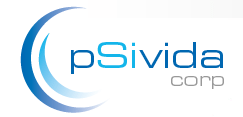
pSivida Corp. (NASDAQ:PSDV) today announced its top-line results for the first of two of Medidur’s phase 3 trials. Medidur is an injectable ocular insert that administers sustained-release corticosteroids into the eye for three years. The insert is designed to treat posterior uveitis, a disease with no known cause that, untreated, causes blindness. The stock is up over 30% since yesterday, December 21st, so investors are obviously happy with the results.
What is significant about the data is not necessarily that Medidur showed efficacy in treating the disease. That was pretty much expected because the corticosteroids used in Medidur are known to be effective against uveitis. What is significant is that after the most recent follow-up, only 3.4% of Medidur-treated eyes compared to 2.4% of control eyes required surgery to reduce intraocular pressure.
Intraocular pressure (IOP) is pressure within the eye that corticosteroids are known to aggravate. The biggest potential problem with Medidur was that sustained release corticosteroids via the microinsert would cause dangerous increases in this pressure. The results show that this is not the case, and though for 3.4% of patients IOP did require surgery, this was not significantly more than placebo.
As a result, Medidur looks likely to succeed in its second phase III trial, after which it plans to submit an NDA to the FDA some time in early 2017.
Medidur’s target market tops 175,000 people a year in the US who suffer from posterior uveitis, which causes 30,000 cases of blindness annually. The cost of the insert is not yet determined, but since pSivida will be marketing Medidur on its own, it will take home all revenues. pSivida already has an older insert that treats uveitis on the market, but since it requires a surgical procedure, it is not very popular. Medidur on the other hand is inserted in an office visit via simple injection, and would address a much larger portion of the market than the older product Retisert.
pSivida is well capitalized for a small company with $25M in cash and receivables, which should be enough to bring it through its second phase III trial for Medidur together with the revenues it receives from ILUVIEN, the same insert as Medidur though for diabetic macular edema. Shareholders can expect another jump like the one we saw today when data from that trial is released in early 2017, assuming it is successful. If the first phase III showed little statistical difference between Medidur and placebo for IOP, it’s unlikely those results will change for the second.
By 2017 if the second and final phase III shows similar results to the first, pSivida could more than double its current market cap.
Disclosure: At the time of writing, the author was long PSDV.




